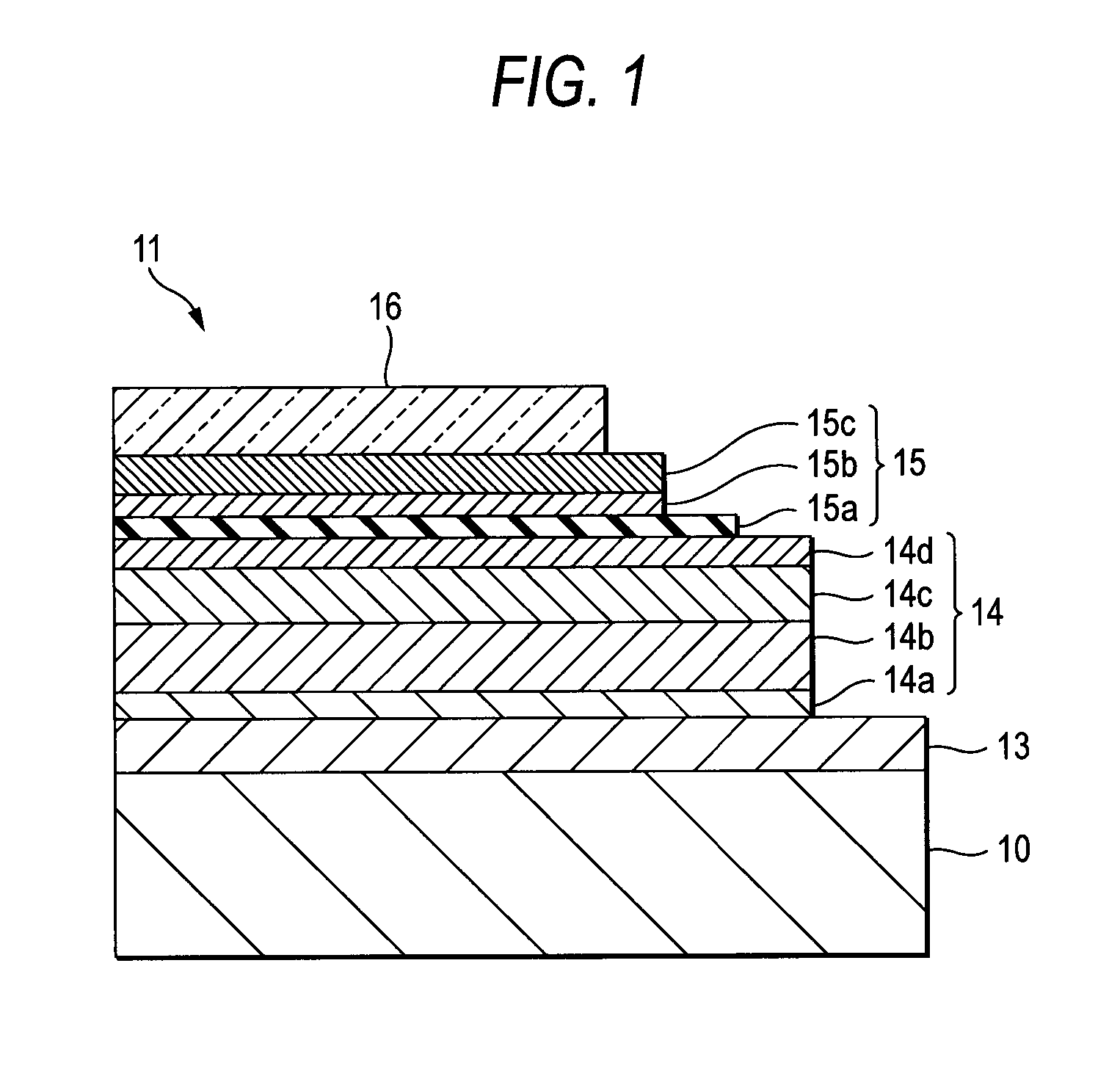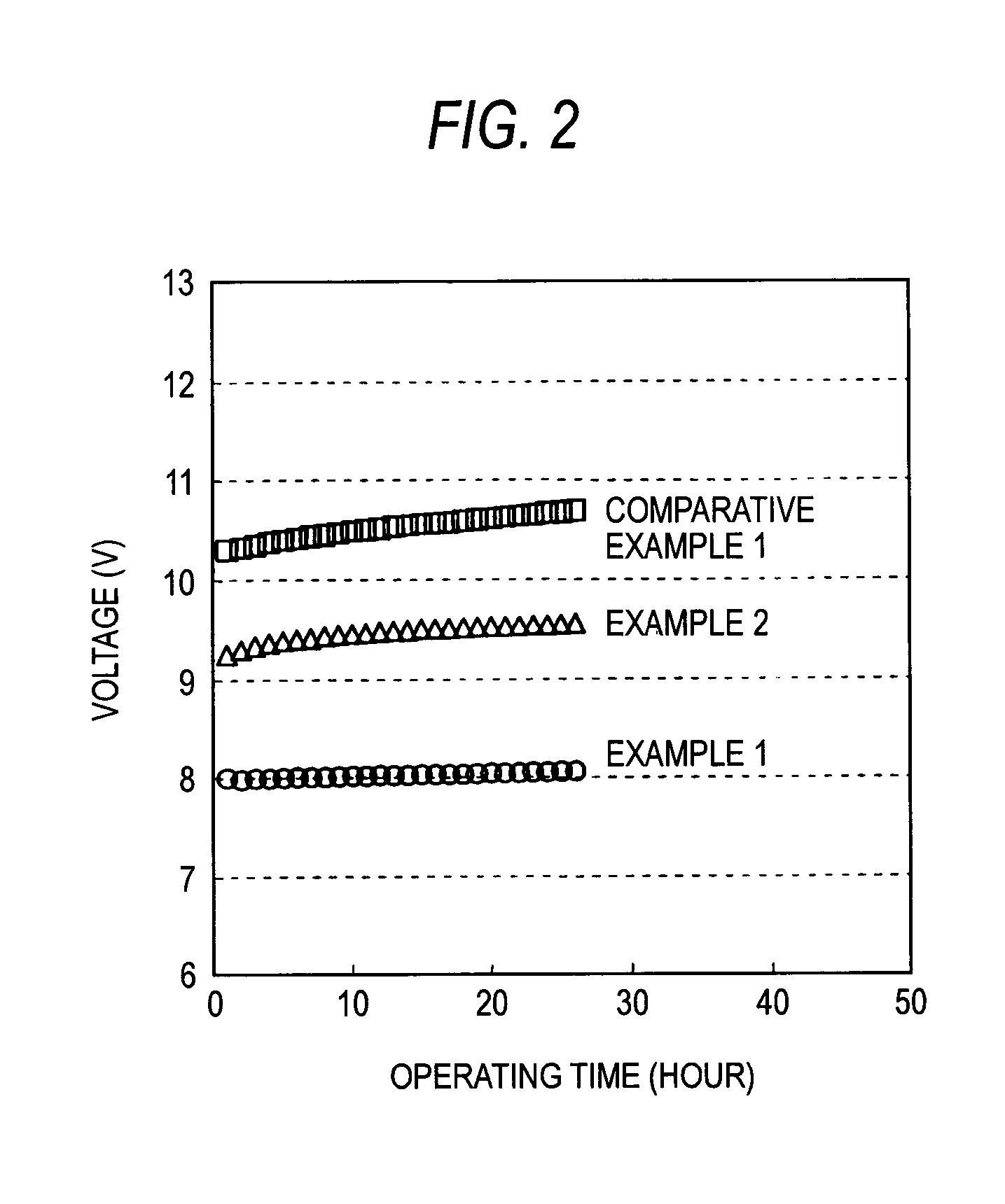Organic electroluminescence device
a technology of electroluminescence device and organic layer, which is applied in the direction of luminescnet screen, discharge tube luminescent screen, other domestic articles, etc., can solve the problems of difficult to ensure light transmittance, no more ensure a sufficient amount of electron injecting efficiency from the electron injecting layer to the organic layer, and no more ensure a sufficient amount of life. , to achieve the effect of reducing the probability of re-combination, reducing light emission efficiency, and excessiv
- Summary
- Abstract
- Description
- Claims
- Application Information
AI Technical Summary
Benefits of technology
Problems solved by technology
Method used
Image
Examples
example 1
[0076]In this example, an organic electroluminescence device in which the electron injection layer 15 has a two-layered structure was manufactured.
[0077]At first, an Ag—Pd—Cu layer was formed on a substrate of a glass plate sized 30 mm×30 mm and an ITO layer was formed thereon to form a lower electrode 13 of a two-layered structure as an anode. Subsequently, a film of SiO2 was formed by sputtering and patterned by lithography to manufacture a cell for use in an organic electroluminescence device masked for a portion other than a 2 mm×2 mm light emission region with an insulative film (not illustrated):
[0078]Then, as the hole injection layer 14a, 2-TNATA (4,4′,4″-tris(2-naphtylphenylamino)triphenylamine] was vapor deposited at a film thickness of 15 nm (vapor deposition rate: 0.2 to 0.4 mm / sec).
[0079]Then, an α-NPD (α-naphthyl phenyl diamine) was formed by vapor deposition at film thickness of 15 nm (vapor deposition rate: 0.2 to 0.4 nm / sec) as the hole transporting layer.
[0080]Then,...
example 2
[0086]An organic electroluminescence device was manufactured in the same manufacturing procedures as those in Example 1 except for forming the protective layer 15c with an Mg—Ag alloy. In the formation of the protective layer 15c, the Mg—Ag alloy was co-vapor deposited to a film thickness of 2 nm at a weight ratio of Mg:Ag=100:5.
example 3
[0087]An organic electroluminescence device was manufactured in the same manufacturing procedures as those in Example 1 except for forming the protective layer 15c as the mixed layer comprising α-NPD and Mg as the hole transporting material. In the formation of the protective layer 15c, the α-NPD-Mg alloy was co-vapor deposited at a film thickness of 5 nm at a weight ratio of α-NPD:Mg 100:5.
PUM
| Property | Measurement | Unit |
|---|---|---|
| thickness | aaaaa | aaaaa |
| transmittance | aaaaa | aaaaa |
| thickness | aaaaa | aaaaa |
Abstract
Description
Claims
Application Information
 Login to View More
Login to View More - R&D
- Intellectual Property
- Life Sciences
- Materials
- Tech Scout
- Unparalleled Data Quality
- Higher Quality Content
- 60% Fewer Hallucinations
Browse by: Latest US Patents, China's latest patents, Technical Efficacy Thesaurus, Application Domain, Technology Topic, Popular Technical Reports.
© 2025 PatSnap. All rights reserved.Legal|Privacy policy|Modern Slavery Act Transparency Statement|Sitemap|About US| Contact US: help@patsnap.com



